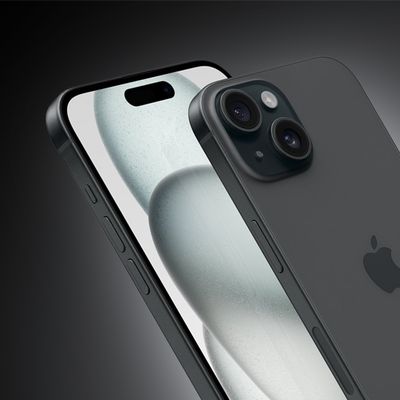Apple's new iPhone 13 series features its latest A15 Bionic processor, which the company says is 50% faster than the competition. That vague claim was the entry point for AnandTech's investigation into the chip's performance, efficiency, and graphics core improvements, and the review's conclusions easily back it up.

Compared to the competition, the A15 isn't +50 faster as Apple claims, but rather +62% faster. While Apple's larger cores are more power hungry, they're still a lot more energy efficient.
Two new CPU microarchitectures feature in the A15, both for the two performance cores and the four efficiency cores, which are likely made on a 5nm+ process, which TSMC refers to as N5P, a "performance-enhanced version" of its 5nm process that allows for higher maximum frequencies.
On top of this, AnandTech notes that the A15 system cache has been boosted to 32MB, which is double the system cache compared to the A14. This doubling "dwarfs the competition" and is a "key factor in the power efficiency of the chip, being able to keep memory accesses on the same silicon rather than going out to slower, and more power inefficient DRAM," says the report.
Apple has also overseen a 50% growth in the level 2 cache of the A15's performance cores, up from 8MB to 12MB, which AnandTech calls "humungous," as it's now the same L2 size as Apple's M1 chip, and over double compared to other designs like the Snapdragon 888. These cache boosts help the A15 to eke out "impressive" gains from a performance core microarchitecture that doesn't differ much from last year's A14, while an additional integer ALU and faster memory subsystem in the efficiency cores only adds to the performance improvements.
Apple A15 performance cores are extremely impressive – usually increases in performance always come with some sort of deficit in efficiency, or at least flat efficiency. Apple here instead has managed to reduce power whilst increasing performance, meaning energy efficiency is improved by 17% on the peak performance states versus the A14.
As for the new A15 GPU, AnandTech calls it "absolutely astonishing," as it showcases improvements that are well above Apple's marketing claims. The only real criticism in the review is the amount of throttling on the iPhone 13 Pro, which AnandTech believes is down to the new PCB design.
Apple's overall iPhone thermal design is said to be "definitely amongst the worst out there, as it doesn't do a good job of spreading the heat throughout the body of the phone." However, even with their somewhat limited thermal capacity, the iPhone 13 models are "still vastly faster and give out a better gaming experience than competitive phones."
In sum, AnandTech says the A15 improvements are "substantial" and believes the efficiency improvements are "key" to the vastly longer battery life seen on the iPhone 13 series. "While the A15 isn't the brute force iteration we've become used to from Apple in recent years, it very much comes with substantial generational gains that allow it to be a notably better SoC than the A14."



















Top Rated Comments
- Alan Kay
* The iPhone CPU now has more cache than the state-of-the art desktop CPUs that cost almost as much as the entire iPhone itself
* [S]Just the four efficiency cores in the iPhone are about as fast as the 2019 13" MacBook Pro[/S]
* The iPhone GPU is faster than the Iris Plus in the $1799 four-port 13" MBP
Yep, Apple is clearly unable to innovate and is entirely doomed...
Edit: it was pointed out that my second claim is not correct. So I retract it, no, the E-cores on the iPhone are not as fast as the 13" MBP. However, if you add P-cores into the mix, A15 is faster than any 13" x86 MacBook Pro that was every built (similar total multi-core performance as the highest-tier BTO Ice Lake CPU, significantly faster in single-core).
He is the reason Intel was on top of the game over a decade, and he is the reason Apple it is where it is, a King in silicone